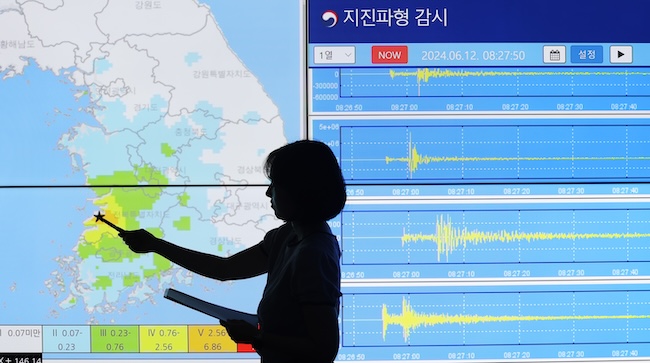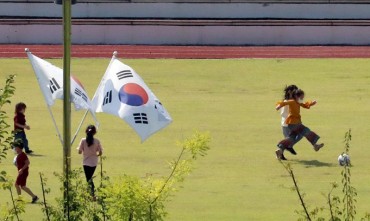
A 4.8-magnitude earthquake struck North Jeolla Province on the morning of June 12. (Image courtesy of Yonhap)
BUAN, Jun. 15 (Korea Bizwire) – The magnitude 4.8 earthquake that struck the city of Buan earlier this week has amplified anxieties across South Korea about the possibility of a more devastating seismic event, prompting many to take precautionary measures like assembling survival kits.
With the memory of the destructive quakes in Gyeongju in 2016 and Pohang in 2017 still fresh, South Koreans are bracing for potentially larger aftershocks in the coming days. Some are not waiting for government guidance, instead actively preparing their own contingency plans.
A flurry of posts on online communities advocated assembling “survival bags” — a perennial product that sees demand spike whenever disasters occur. Typically packed with emergency rations, medical supplies, warmth-providing gear, knives, flashlights and other essentials, these kits were a hot commodity after the Gyeongju and Pohang tremors.
“I already had an emergency bag stored, but this recent quake prompted me to re-evaluate whether I need any additional items,” said Jang Sung-jae, 34, a resident of Heunghae, the Pohang epicenter.
A sales representative at a safety equipment company said inquiries from individual customers had surged after being typically fielded from businesses and organizations. “We’re getting a lot more calls from regular citizens since the earthquake,” the representative said.
On internet forums, people shared checklists of desired survival kit contents and advised stocking up on hard hats, work gloves and other protective gear, noting that local governments do not provide such supplies.
Citizens are also examining whether their homes have adequate seismic reinforcement. Under current building codes, earthquake-resistant design is mandatory for new residential and commercial structures exceeding 200 square meters or two floors. But older buildings often lack such protections.
At a parliamentary inspection last year, it emerged that only 16.4% of the country’s 6,175,659 structures meeting the seismic criteria had obtained earthquake resistance certification.
The quake has also driven more inquiries about disaster insurance products. Federal and local governments jointly offer storm and earthquake disaster insurance that provides compensation for nine types of natural calamities, covering up to 92% of premiums.
“We’re getting quite a few more calls asking about this insurance,” said an official at a regional government, adding that details were also being provided about a no-fee personal safety policy.
The temblor has underscored the need for greater public readiness, some experts say, after the emergency phone alerts about the Buan quake prompted complaints from some residents about the “noisy” notifications from distant areas.
“People were bemused about why the greater Seoul area got texts about a quake far away,” said Baek Sun-dae, 36, of Guri in Gyeonggi Province, “but we need to recognize disasters can happen anywhere, like North Korean balloon attacks.”
A public safety ministry official urged the public to familiarize themselves with emergency protocols, evacuation sites and stockpile essential goods. “People need to get prepared in advance for when disasters strike,” the official said.
M. H. Lee (mhlee@koreabizwire.com)






